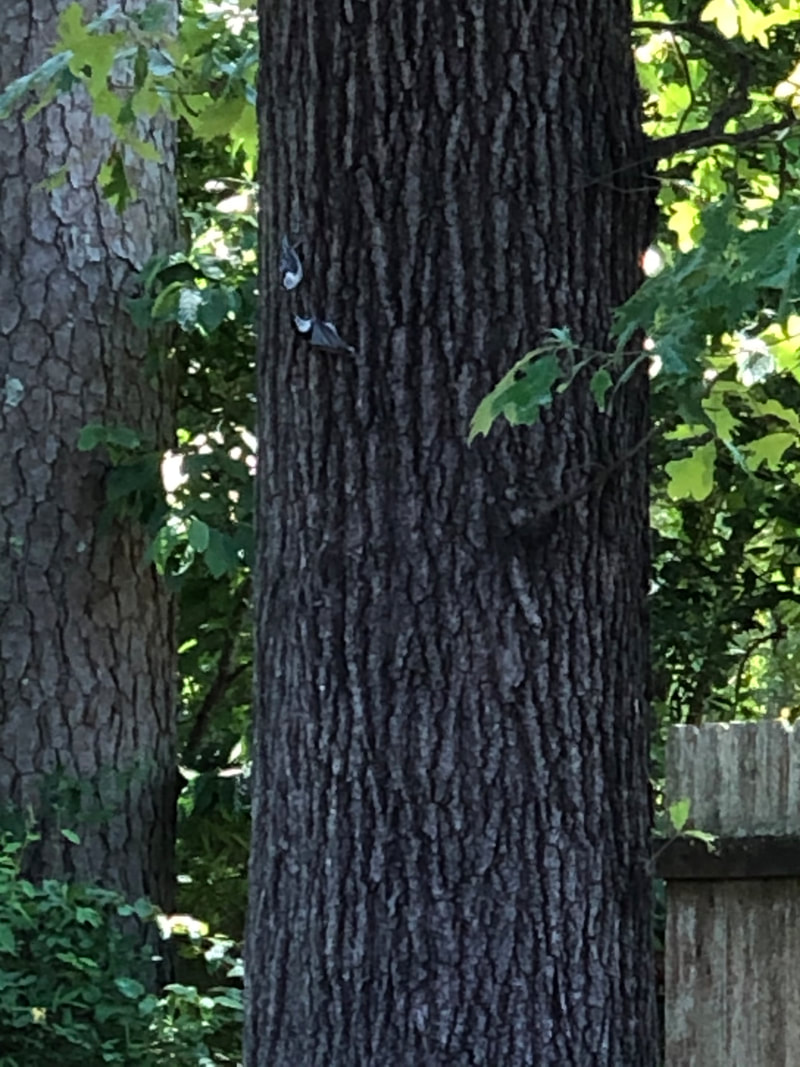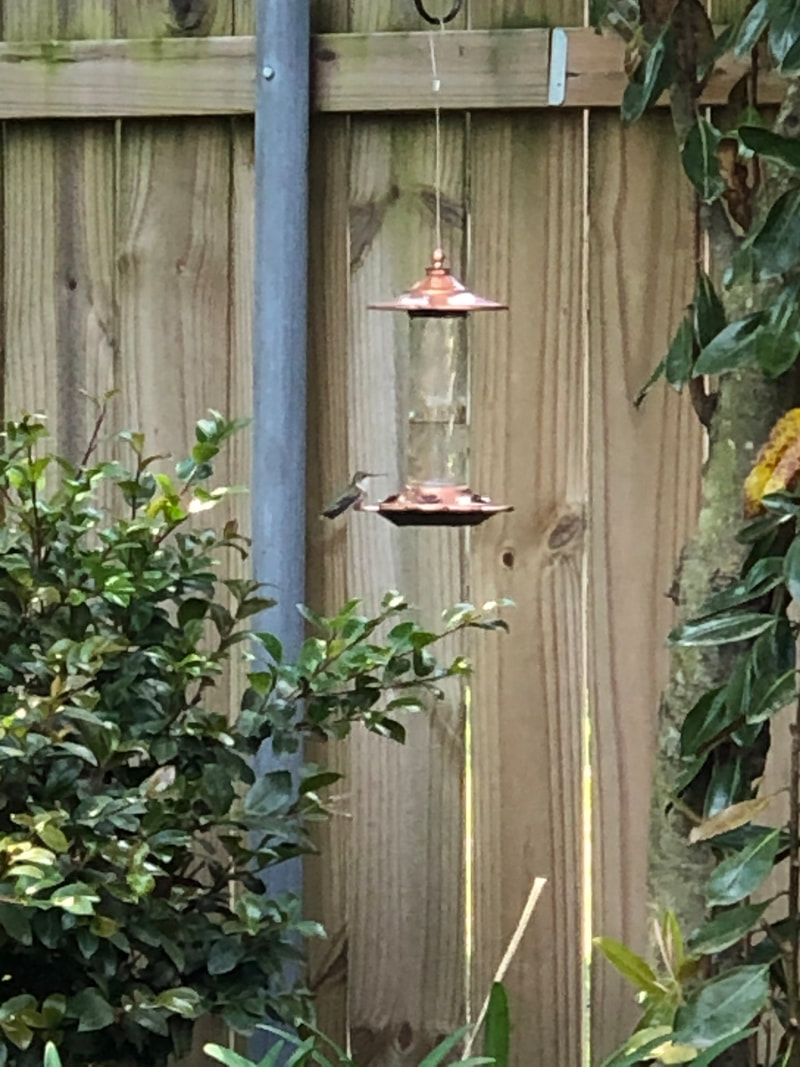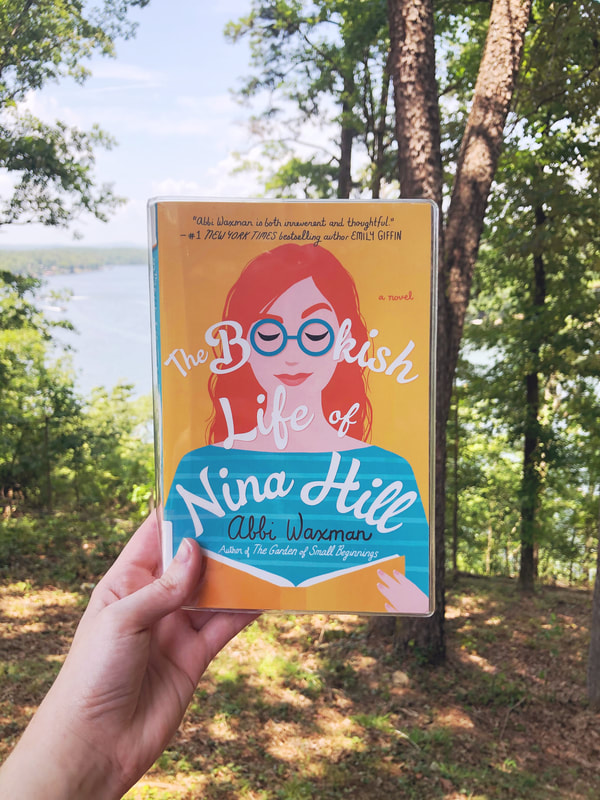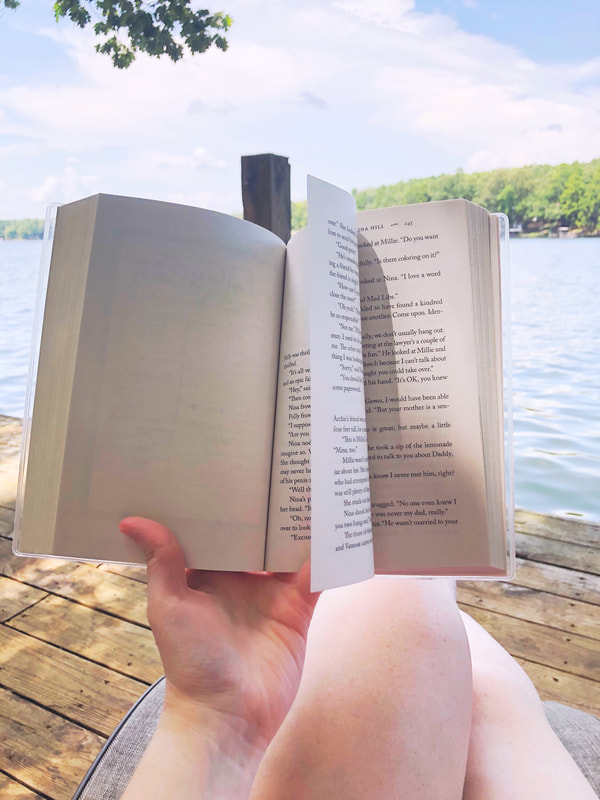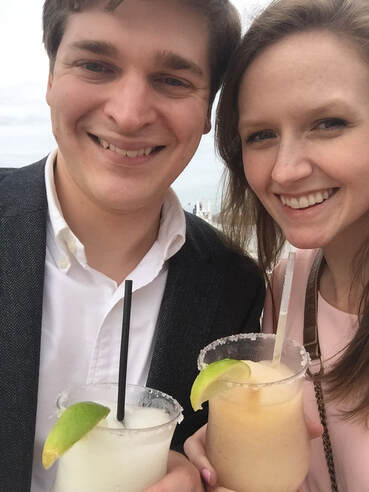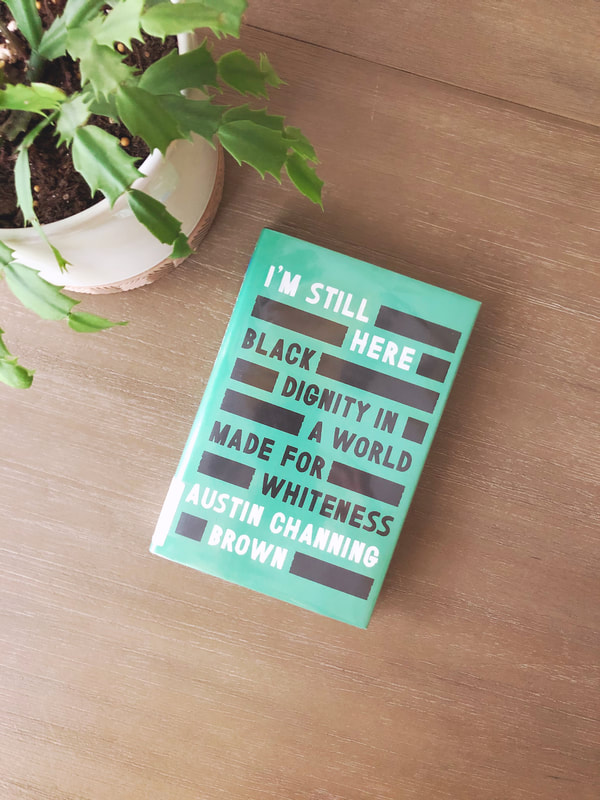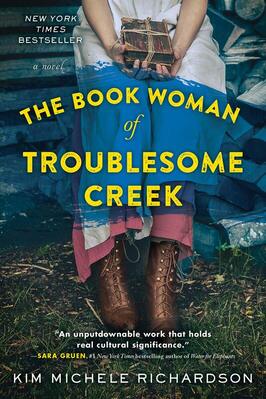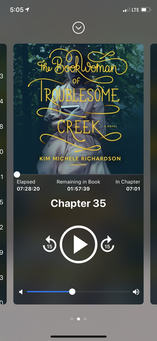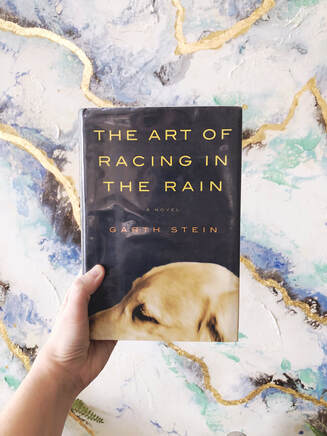 I'm over a decade late to the game, but I finally read Garth Stein's bestseller The Art of Racing in the Rain, which later was adapted into a movie starring Milo Ventimiglia. Even though I have no interest in race cars and I have never owned a dog, I still can say this book was worth every bit of its hype. Narrated by a philosophical and adoring dog named Enzo, The Art of Racing in the Rain opens with the dog's final days on Earth as he looks back on his life and his master's troubles. Denny, Enzo's human, is a race car driver who suffers hurdle after hurdle. When his wife gets sick and dies, his in-laws drag him to court for custody of his daughter. Just when Enzo thinks Denny's tribulations can't get any worse, someone accuses him of a wretched crime that he did not commit. Enzo's language and narration is clever, thoughtful and at times, humorous, but never cliche or silly. The Art of Racing in the Rain is not just about a dog. The novel captures the strength of human will, love for family and demand for justice. Our narrator views the protagonist with unwavering devotion, even when he sees Denny's most raw and honest self. Despite Denny's flaws, Enzo never leaves his side until the dog himself decides his job is done. Throughout the book, I laughed out loud, became outraged and shed a few tears. Whether you've loved dogs your entire life or if you've never called a dog your own, do yourself a favor and read The Art of Racing in the Rain. Check it out from your local public library or purchase it from your local bookstore or on Amazon here. Four stars. Looking for more books? Follow me on Instagram and Goodreads for my most up-to-date reads!
0 Comments
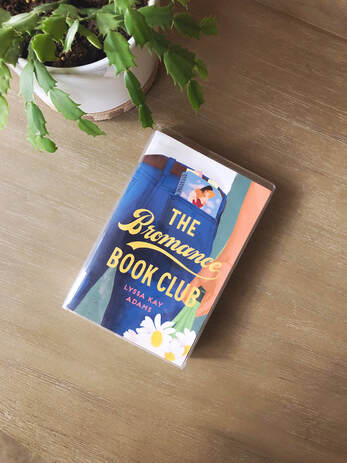 Of all the lessons 2020 has taught me, one of my favorites is what I've learned about myself: I love a well-written romance novel. I used to be one of those snobs who only thought literature was worth the time to read, but not anymore folks! Like many others, my anxiety skyrocketed in March and hasn't come down much since then. I found solace in my go-to coping mechanisms: prayer, therapy, puzzles, walks, bird watching and Netflix. In 2020, I've introduced completely predictable, unapologetically sappy, laugh-out-loud funny romance novels to the list. When up is down, when a dearly loved family member is in the hospital, when social media is mean and spiteful, books like The Bromance Book Club by Lyssa Kay Adams help clear your head and spark a little joy in your heart. The Bromance Book Club did that and more. The book wasn't just a predictable narrative. It followed the tropes of the genre, and the author was in on the joke. Our protagonist is Gavin Scott, the hero of his Nashville professional baseball team. He scored a walk-off home run in game 6 of the American League championship and scored even bigger at home, if you know what I mean. What should have been a memorable night for all the right reasons actually revealed a painful lie: his wife Thea had been faking it in bed their entire marriage. Ouch. Instead of dealing with conflict in a healthy way, our boy Gavin sulks and moves into the guest bedroom. He gives Thea the cold shoulder and won't speak to her until she asks for a divorce. Only at this point does Gavin realize that he wants to fight for their marriage. His friends initiate him into a secret book club made up of the who's who of Nashville men. They have one mission: improve their real-life relationships by learning how to charm, seduce and court their partners from reading Regency romance books, complete with naughty book covers and naughtier pages within. The story goes about how you would expect: boy courts girl, girl resists, boy pursues more, girl gives in, big secret is revealed, girl retreats, grand gesture, happily ever after! While The Bromance Book Club included everything I enjoy about a good romance, what I really loved was the self-awareness of the author. Between the chapters of our lovers Gavin and Thea are the chapters of the book-within-the-book Gavin is reading, titled Courting the Countess. Gavin takes cues from the book and uses them in his relationship, thus making our story even more predictable. As the saying goes, life imitates art. Courting the Countess foreshadowed The Bromance Book Club and I thought it was witty and well played. I also really appreciated a story about marriage. Most romance novels are about the pursuit into a relationship, whereas this one is about the continual pursuit after the wedding bells. The characters in this book learn the importance of communicating clearly with one another about what goes on in and out of the bedroom. It's beautiful and endearing and such an important message to readers. Love is more than what you feel toward another person. Love is creating an environment safe enough to be vulnerable in the presence of someone you trust, giving them open access to all of you - mind, body and soul. I liked this book so much I've already put the sequel Undercover Bromance on hold at the library. It looks like this one is about a different member of the book club - very exciting! If you need a respite from the gloomy news cycle, check out The Bromance Book Club from your local library, purchase it from your local bookstore or from Amazon here. Four stars. Looking for more books? Follow me on Instagram and Goodreads for my most up-to-date reads! 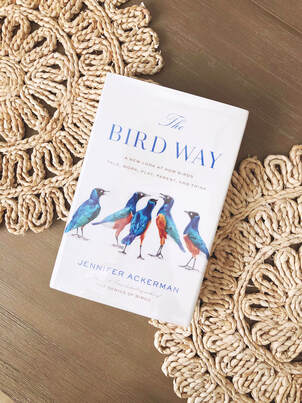 I have loved birds as long as I can remember. There are certain brisk spring and autumn mornings when sound travels clear and far that take me back to my grandfather’s house, where I first learned bird calls and names. He taught me about robins, cardinals, bluebirds, woodpeckers, ducks, geese, owls and more. He told me about how they would fly halfway across the world to come visit us every year. I was a casual observer until I went to college, when I became obsessed with the white pelicans that would rest in the LSU lakes for winter vacation. While observing the pelicans’ beauty, I learned about cormorants, snowy egrets, little blue and great blue herons that fed along the shores beside the giant white birds. Watching the birds soothes me. It was therapeutic to sit outside for hours on end, soaking up God’s creation after a stressful class. When my husband and I bought our first house, I prioritized hanging a bird feeder in the backyard. I enjoyed watching our neighborhood birds and was incredibly thankful they were already familiar with our feeder when the world came to a screeching halt in March. Like so many others during this pandemic, I found solace sipping coffee on Saturday mornings on my back porch, watching the birds blissfully fly in and out of my yard. Having been forced to slow down, we witnessed bird behaviors that we might otherwise have missed. We watched white breasted nuthatch fledgings harass their parents for sunflower seeds, hopping up and down the oak tree trunk like tiny acrobats. We laughed at a clever ruby-throated hummingbird freeze into hiding position in a camellia bush - camouflaged in color and shape like one of its leaves - when another territorial male dived in to protect its feeder. We learned the calls of so many songbirds and decided that the Carolina chickadee had the sweetest, purest and loveliest sound of them all. Jennifer Ackerman’s The Bird Way is the perfect book for a bird nerd like myself. I checked it out from the library for two reasons. First, because birds, duh. Second, because our library's summer reading committee is already narrowing down top titles for the 2021 theme Tales and Tails (expect a lot of animal themed books on this blog for the next few months). I typically can't commit to a nonfiction book (I give up after a few chapters of most of them except memoirs), but I kept coming back to this one because it was so incredibly fun and interesting to me. In it, I learned how birds across species live varied lives. They are as diverse in their foraging, singing, parenting and even playing as we humans are. I found myself often Googling images of the foreign and exotic birds she researched: the adorable keas, the colorful fairy-wrens and the dastardly magpies. I will probably never see these birds in the wild, but I thoroughly enjoyed learning about their behaviors from a dedicated researcher and talented writer like Ackerman. If you're looking to take your bird knowledge to the next level, check out The Bird Way from your local library or purchase a copy from your local bookstore or on Amazon here. Three stars. Looking for more books? Follow me on Instagram or on Goodreads for all my books! 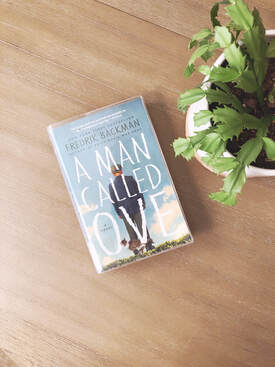 You ever start to grieve the ending of a book before it's over? You suddenly feel the weight of the book has shifted from your right hand to the left. You've been so absorbed in the story, you didn't realize there are less pages to read than pages you have already read. You want to know how the story ends, but you don't want it to be over. So you cherish the last few pages, slow down your eyes, reread sentences that made you think, take time to laugh or cry, and sigh with contentment as you close the book with finality. I imagine life can be like that too. A Man Called Ove by Fredrik Backman was an absolute joy to read and an absolute heartbreak to finish. The characters were three-dimensional and the plot was captivating. At times I cried my eyes out, occasionally from weeping and many other times from laughing. Hilarious and bittersweet, A Man Called Ove was the best book I've read all year. We all know a man like Ove. Maybe he is called George or Scott or Papa. Maybe the Ove in your life is a woman. But one thing all Oves in this world have in common, no matter what they are called, is that we have not treated them with the respect and love any human deserves. They are perceived to be old grumps, so we treat them like old grumps. We demean them, annoy them and ignore them. We sum up their existence in their attitude and nothing else. The Ove in our life is obviously misunderstood, but we just don't have the patience or compassion to take the time to ask questions, to get to know him, to become friends, to learn from his lessons that he has to teach. A Man Called Ove is about such a person who has been wronged by this world. He has been the victim of bureaucracy and injustice. There is a right way and a wrong way to do everything, and Ove knows they just don't make 'em like they used to. Then, they tried to take his job. They tried to take his house. They tried to take his dignity. He lost the love of his life. He pushed away a friend. He just wants it all to be over. So Ove tries to kill himself. Yet during every attempt, he is thwarted. The rope breaks, the cat stares and the loud, pregnant, foreign neighbor interrupts. And it's somehow both hilarious and heartbreaking. Fredrik Backman has a gift of making a horribly depressing situation and an awfully sad, old man hysterical. And this loud, pregnant, foreign neighbor manages to do what hardly any other person in Ove's life could. She persistently makes contact. When he pushes her away, she pushes back in. When he yells at the stray cat, she insists he take it in as a pet. When he finds the other neighbors repulsive, she brings them in. When he locks himself in the house, she pounds on the door. When he ignores her, she boldly asks for favors. And through all her non-stop annoyance, Ove begins to delay his death. He pushes back his suicide one day at a time, until he stops imagining it all together. This story was a sweet, beautiful reminder of the humanity of our neighbors, even the grumps. It is our responsibility to reach out, to make connections, to befriend. We never know what battles they are facing. When a story is this funny, this heartwarming, this thoughtful, this beautiful, I don't want it to end. But just like those people we love who have left us too soon, the characters and lessons of this book will stay with me for a very long time, even when it's all over. Check out A Man Called Ove from your local public library or purchase a copy at your local bookstore or on Amazon. Five stars. Want more books? Follow me on Instagram at @daniellekelleytolbird and on Goodreads here. 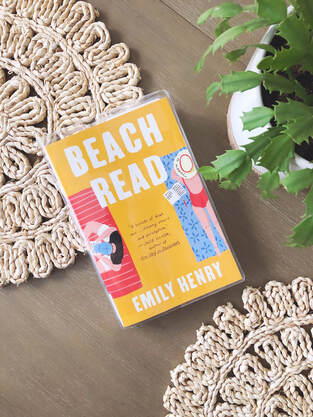 When I stumbled upon Beach Read in the technical services department at the library where I work, I immediately added it to my TBR list. Everything about this book screamed fun romance, from the cover art to the back cover description. The first act of the book fulfilled my expectations - two rival authors happen to live next door to one another at the beach one summer and love brews. They make a bet to write outside their comfort zones. Hunky, emotionally complicated Augustus Everett's last literary fiction novel is still on the New York Times best seller list one year after publication. Meanwhile, our witty, hopeless romantic protagonist January Andrews churns out romance after romance that tie up nicely with a happily ever after. Having known each other since college (and not-so-secretly crushing hard then and now), January and Augustus challenge each other to write a full-fledged manuscript in the other's genre by the end of summer. Whoever's book gets published first will get a glowing review from the loser. But after the first act, Beach Read doesn't follow your stereotypical beach read's plot. Our protagonist, whose father died unexpectedly, goes through all the stages of grief throughout the book. She stays angry for a long time, due to the new knowledge that her father lived a secret second life. The house she is living in was actually his hookup spot with his mistress. January even runs into said mistress on multiple occasions during her summer. Writing a not-so-happy book is cathartic for her, as is falling head over heels in love with her neighbor, who has his own troubles to work out on his own. While the ending was predictable, the journey along the way was unexpected. If you're looking for a beach read, Beach Read may not be the book for you. But if you're looking for a romance with substance and characters with complications, it may be the perfect escape. You can borrow Beach Read from your local library or purchase it from your local bookstore or order it on Amazon here. Three stars. Want more books? Follow me on Instagram at @daniellekelleytolbird and on Goodreads here. 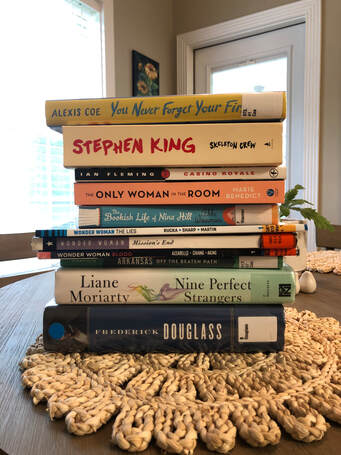 A little light vacation reading ;) A little light vacation reading ;) After reading The Unhoneymooners, I knew I wanted another laugh when I’d go to Arkansas for a mountain and lake respite. Per usual, I packed entirely too many clothes I could possibly wear while hiking and social distancing and, of course, too many books I could possibly read in one week. I was sure to check out The Bookish Life of Nina Hill by Abbi Waxman for some humor, but I thought I’d finish it quickly and would need more reading materials. I went overboard. Beside downloading an Agatha Christie short story and I Know Why the Caged Bird Sings in audiobook format for the drive, I stowed away an entire bag of other books from the library: three Wonder Woman comics, Nine Perfect Strangers by Liane Moriarty and two biographies for Grant (the Pulitzer Prize-winning Frederick Douglass biography by David W. Blight and the humorous George Washington biography You Never Forget Your First by Alexis Coe). I also threw in a historical fiction novel I received for Christmas that I have yet to get around to, and upon further inspection, I realized Grant snuck in Casino Royale and Stephen King’s Skeleton Crew. Needless to say, between our outdoor adventures in the Natural State, we hardly made a dent in our TBR stack. In the hot afternoons, I settled in with The Bookish Life of Nina Hill. This family dramedy was the perfect light read and escape from other people and life back home! I believe Nina Hill would be one of the few of us who actually enjoy social distancing. She works at a small bookstore and loves to spend her free time doing nothing else but reading books alone, sitting by her cat Phil. She occasionally forces herself to socialize by competing with her trivia team in local watering holes, but is now and then overwhelmed with anxiety. Her secluded life comes to an abrupt halt when she is contacted by her unknown dead father’s attorney. He informs Nina she is listed in the multi-millionaire’s will. Now Nina is not only forced to have awkward conversations with her new siblings (ranging in age from 10 to 59), but she also must save the bookstore that’s six months behind on rent and pursue a romantic relationship with the dreamy guy on the rival trivia team! The shining moments of The Bookish Life of Nina Hill are those in which the author allows our title character to explore her emotions. Nina and a few of her new-found family members suffer from anxiety. Abbi Waxman perfectly explains what anxiety feels like and how it affects our title character’s life. Waxman doesn’t sugarcoat or romanticize the mental illness, like many authors are prone to do. She also doesn’t let the disorder define Nina. As someone who battles anxiety, I related to Nina the most in these moments. I love that Nina is a well-rounded character with many attributes, one of which is anxiety disorder. Anxiety doesn’t define Nina, but it does affect certain situations she finds herself in. Nina explores new emotions when building relationships and discovering similarities between her new siblings. The loveliest scenes are between Nina and her youngest sister Millie. Nina hesitantly, but gladly, accepts her role as big sister and mentors the little girl Nina sees so much of herself in. A fun read, the only times I found myself mildly bored was with the romantic storyline between Nina and Tom, the rival trivia team’s sports wiz. At times, their relationship lacked chemistry and I found the overall storyline to be forced. Nevertheless, the book is charming and at times funny and sentimental. The family drama, Nina’s awkward, bookish quirks and the way Waxman delivers anxiety are worth the read. If you’re like Nina and don’t exactly want to be around other people right now, definitely check this one out at your local library or purchase it from your local bookstore or order it on Amazon here. Three stars. Want more books? Follow me on Instagram at @daniellekelleytolbird and on Goodreads here. 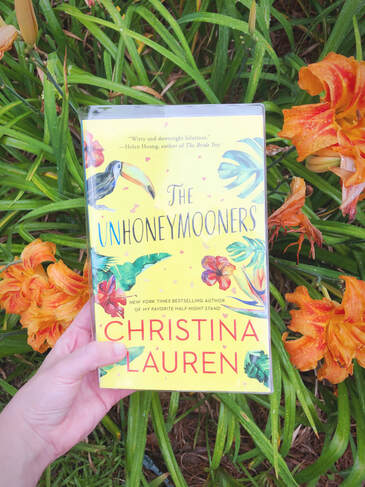
After reading a few beautiful, heavy, thought-provoking and at sometimes, dark, books in a row, I knew I needed a palette cleanser.
When I chose The Unhoneymooners by Christina Lauren, I thought I would get a few laughs, relax for a bit before bed and mentally prepare myself for my next high-brow "literature" read (I know, I know, I'm a snob.). But what I received in these pages was a delightfully fun, hilarious romp on the beach. I allowed myself to be more than just distracted by this book. I purely enjoyed this book. Reading The Unhoneymooners gave me the same sensation of eating a popsicle on a summer day with the sugary syrup dripping down my thumb. Hot. Sweet. Carefree. Every time I came to a stopping point (which was difficult because I wanted to binge read the entire 400 pages in one sitting), I said to myself out loud, "This is FUN!" Writing duo Christina Lauren sets up The Unhoneymooners like any great rom-com movie. When everyone gets food poisoning at Ami and Dane's wedding, the bride and groom send their respective sister and brother on their honeymoon to Maui in their stead. The only catch is that Ami's perpetually unlucky twin sister Olive and Dane's hunky brother Ethan are sworn enemies. They vow to one another to enjoy separate vacations... in the same hotel room. What could go wrong? OR TERRIBLY RIGHT?!
The Unhoneymooners is Fun, with a capital F. There's witty banter stuffed with sexual tension you could cut with a knife. There's hilarious misunderstandings and little white lies. There's beautiful sunsets and paintball adventures and true love!
Is the book predictable? Of course. But if you needed a mental break like I did, do yourself a favor and check this one out. Five FUN stars. You can check out The Unhoneymooners at your local library, or purchase it from your local bookstore or on Amazon here. Want more books? Follow me on Instagram at @daniellekelleytolbird and on Goodreads here. I believe in sanctification.
I believe that the Holy Spirit is shaping me to look more and more like Jesus as I walk through life. I believe He convicts believers' hearts of sin, implores us to repent and molds us for righteousness. I believe all glory of these changes belong to God. I believe God can take someone from sin to holiness, from pride to humility and from racism to antiracism. And I also believe that I am responsible for putting in the work. So when I saw the video of two white men hunting Ahmaud Arbery, I was deeply troubled. I believe the deep trouble of my heart was the Holy Spirit convicting me to pay attention. So I shut my mouth and listened to what He had to say. What He had to say came from the cries of His creation, that undeniably, wholeheartedly and without restriction, Black Lives Matter. I've agreed with this statement for many years, but have refrained speaking its truth aloud to avoid arguments with (white) friends and family. So during quarantine, I slipped on my running shoes, snapped a pic, threw out a #blacklivesmatter hashtag on Instagram in my support of justice for Ahmaud Arbery. In my self-righteousness, I thought this was good enough. A step in the right direction. "At least I'm not like so-and-so, who uses the n-word," I thought to myself. "Finally, I'm speaking out. I'm brave for saying that Black lives matter." What pride. But when I read about Breonna Taylor's home being unlawfully intruded by the men sworn to uphold the law and then killing her in bed, my heart squeezed. When I read a description of George Floyd's last moments on Earth (I can't bring myself to watch it), I was enraged. I also believe that the Holy Spirit uses rage to spur action. He was telling me that what I was doing was not enough. So I listened harder. I sought out information, rather than allowing it to find me. I Googled words like, "Congo Square," and "Tulsa 1921," and "Rosewood." How did they not teach us these things in school?! The memory triggers. I'm in 7th grade. My classmate Louis is making a scene about our American history teacher. I don't remember the details, but I remember him accusing her of "being a racist." She wasn't my favorite teacher, but I remember thinking his comments were harsh. I knew that being called a racist was a serious offense, if not the most serious offense in name calling. Knowing what I know now, Louis was 100 percent right. The woman insisted on calling the damn Civil War "the War of Northern Aggression." She described John C. Calhoun as the utmost Southern gentleman, perfectly polite and the great defender of states' rights. At 12 years old in her classroom, she was the authority. She was the expert. She was the adult. I was her student, her sponge, soaking up her knowledge. She was responsible for teaching me American history and I didn't get the full picture. I didn't even get half the picture. I got a warped, oversaturated, sorry excuse of the history of our nation. Louis knew what was up. Louis, unlike me, was Black. As a preteen, he knew something not even our teacher understood: that racism was and is a powerful, overt system, steeped in American history. I will never understand how Louis felt sitting in that classroom, listening to that teacher. But I know now, that I have a lot of learning to do. So, I went to the place of lifelong learning: the library. Conveniently, I work full-time in a library, surrounded by books that could teach me the things my schooling left out. Wanting to read a nonfiction book written by a Black author of the Christian faith, I selected I'm Still Here: Black Dignity in a World Made for Whiteness by Austin Channing Brown. I had previously overlooked this title because of the author's name. "I don't want to read a book about Black people written by some white dude," I thought. But when my mother recommended it to me, she mentioned in passing that the author had a white man's name. Her parents had the foresight to give her a name that would get her job interviews. Right off the bat, I'm recognizing my white privilege. When I imagine the names of my future children, I never once think about what will look good to employers on resumes. I placed the book on hold, checked it out and read it over a single weekend. While the book is small (185 small pages), it reveals loads of information. Much of that information was new to me. Again, I found myself Googling new terms. This time, I won't blame my teachers. My mother never would have screened "Candyman" and she wouldn't have styled my hair with a "pineapple fro." I also learned more about serious and complex terms that I already knew the definition of, but not quite the extent of its impact. White supremacy. White privilege. White fragility. And, as Brown puts it, "white fragility's cousin: white guilt." I learned how Brown finds people like myself - white and ignorant - exhausting. I learned that I needed to read with an open heart and open ears and open eyes. I also learned that simply reading books by people of color won't do much if I don't take what I learn and put it into practice. Packed with so many emotions - pride, anger, hope, exhaustion, fear, love - reading I'm Still Here felt like I was on a jerky and highly uncomfortable roller coaster. I used to love those roller coasters as a kid. I loved the feeling of my stomach in my throat. Now I just feel like throwing up. So, to take a page out of Brown's book, I will name white supremacy and renounce it. "White supremacy is a tradition that must be named and a religion that must be renounced. When this work has not been done, those who live in whiteness become oppressive, whether intentional or not." (emphasis mine) So I'll do the work. I'll educate myself the best way I know how. "Our only chance at dismantling racial injustice is being more curious about its origins than we are worried about our comfort." I'll sit with being uncomfortable. "Sadly, most white people are more worried about being called racist than about whether or not their actions are in fact racist or harmful." And I'll speak out against injustice more freely, listen with more open ears and rest in the fact that the Holy Spirit is with me and is sanctifying me. "Is this not the work of the Holy Spirit to illuminate truth and inspire transformation? It's haunting. But it's also holy. And when we talk about race today, with all the pain packed into that conversation, the Holy Spirit remains in the room." You can check out I'm Still Here at your local library, purchase it from your local bookstore or order a copy from Amazon here. 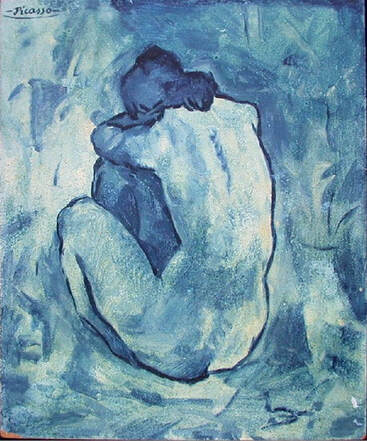 PIcasso's Femme Nue PIcasso's Femme Nue I moderate my library's Online Book Club and our pick this quarter was The Book Woman of Troublesome Creek by Kim Michele Richardson. From what we could glean on Goodreads and Amazon, the novel was about a traveling packhorse librarian in the 1930s who loved bringing her patrons the perfect book. I'm not going to lie; part of the reason I leaned toward this selection was the potential for a PR opportunity. I love that librarians today take the same amount of pride in choosing materials for patrons and I hoped that our Online Book Club members would recognize this subliminal (or not so subliminal) messaging. I could envision the Facebook comments: Thank you, Book Women of Ouachita Parish, for picking the perfect book for me during quarantine! But what made this librarian different from her cohorts of the 30s and of today was the color of her skin. Book Woman Cussy Carter was not white. She was not Black. She had blue skin. At first I thought this was some sort of fantasy, magical realism-esque subplot, but soon discovered the main character was actually based off the real Blue People of Kentucky. Her color was not a subplot. The fact that she was blue played a huge role in the novel. So, I downloaded the eAudiobook on the Hoopla app using my library card, taking mental notes of questions to ask the book club later. Cussy rides her mule up and down Appalachia, delivering books to the poorest and hungriest and opening doors with literacy. Cussy is labeled as “colored” by others, and her blue skin is grouped together with anyone else who does not have white skin. Despite prejudice, she works hard on the trail for work and at home taking care of her coal mining blue father. When the curious local doctor conducts a series of painful tests, he discovers she simply has a medical condition with a simple, temporary cure. With her new white skin, acceptance into society doesn’t come as easily as she thought it would. Based on the true story of Blue People of Kentucky and the WPA’s pack horse librarian program, The Book Woman of Troublesome Creek discusses race, education, faith and poverty. It analyzes beauty, belonging and belief in a heartwarming and at times, heart wrenching way. While the book teetered toward melodrama in its third act, it was still a thoroughly enjoyable book and I’m glad I read it. What made this book so special was its careful, complex and pointed discussion of race. While Cussy is not Black, she is still labeled as "colored." She does not have access to certain bathrooms or community dances or churches or even the opportunity to fantasize about loving someone who could love her back. The lingering words of her father ring in the background; she must lay low or she'll get hurt because of her skin... or worse. Blues and Blacks were killed because of their skin in these hills. When she takes her newfound medicine, Cussy quickly becomes obsessed with her whiteness. Her few friends call her beautiful. She takes pride in her friends' positive and shocking reactions. She often looks in the mirror, admiring her pale skin. Her vanity - her whiteness - becomes the most important part of her life. But she hates the skin she was born in, not just because white is considered most beautiful, but also because of the dangerous lynchings others threaten. Blue is considered ugly, bruised and shameful. The prejudiced and hateful people told her lies: She was cursed; she was born of the devil; she was a heathen; she wasn't allowed to worship a good God, because a righteous God would only give someone a birth defect if that person or his or her parents were sinners. When Cussy turns white, she hopes that others will soon accept her because she is like them. To the surprise of no one except our leading librarian, the people who hadn't accepted her when she was blue, didn't accept her when she was white. Before reading this book, I would say the Fugate family suffered from the medical condition methemoglobinemia. But now, I must change my verb choice. All research shows that the congenital version of this disease has no side affects other than blue skin and a darker colored blood. The family lived long lives, without physical pain other than that which was afflicted upon them from outsiders. Is having a skin color other than the norm considered a sufferable condition? Is being different, is being outside the Western standards of beauty, wrong? Of course not. I loved what one of Cussy's patrons told her about her blue skin. Oren Taft - a soon-to-be Book Man - tells her that her skin reminded him of Picasso's Blue Lady that he had seen in one of her materials she had brought him on her route. Cussy ponders: "The more I thought about his Picasso Blue Lady, her fine color, the best color, the more I reckoned God wanted me to have it. If it was good enough for Him and the famous artist, it had to be enough for me. Blue had to be enough for me, I vowed. The next morning, I looked into the mirror a little afraid. The white had quickly faded and the blue rose on my flesh, deepening, bruising as I narrowed my eyes and whispered to my reflection, "This must be enough. I am enough." I nearly whooped out loud when Cussy comes to this realization. Despite the lies the Enemy had told her, she still recognizes that God made her in His image and no matter what color her skin is, that it is enough. She still experiences heartache at the hands of evil men and women, but she literally becomes comfortable in her own skin. I can't wait to discuss this book with our patrons, and I look forward to your thoughts. Four Stars. Share your comments below: |
Danielle Kelley TolbirdSurrounded by books by day, Tolbird works as the communications coordinator of her local library. She writes about her favorite books, faith in God and daily life. Archives
January 2021
Categories
All
|
 RSS Feed
RSS Feed
